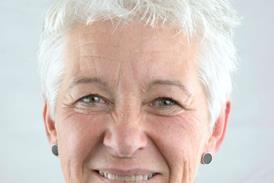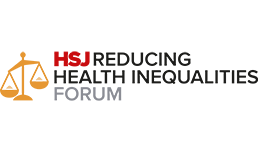A group of experts discuss how best to build a more inclusive health and care service
Covid has underscored the importance of shared data both in improving care and reducing inequalities, according to Justine Patterson, senior population health strategy executive with Cerner.
“Shared care records, for example, really exploded during the pandemic, so places that didn’t have shared care records got them up and running really quickly,” she said. “The benefit of having that real-time data, which really augmented safe clinical decision-making, had huge patient benefits as well in terms of them not having to re-explain their story. And it led to a lot of efficient new workflows as well.”
Sponsored by
Richard Samuel, deputy head of innovation with NHSX, said that the advances made during the pandemic must not be lost. “I think everyone just needs to continue to agitate; we cannot regress,” he said. “We can’t be cavalier with data, but we cannot regress with the isolation of data in a shared dataset. So keep up the pressure.”
“Our clients are really seeing the benefit of having a linked dataset, with near real-time data from across the whole healthcare system, combined with ethnicity and deprivation status,” said Ms Patterson. Cerner has been working with clients to develop an Elective Recovery dashboard, for example, that brings in a whole range of population health data – including frailty, long-term conditions, and indicators of deprivation. This allows them to drill the data in different ways, informing more equitable access and targeted interventions.
In London, for example, a covid-19 vaccination dashboard showed low vaccination uptake in particular population groups so services were able to put in targeted campaigns to encourage these groups to come forward for their jabs. “Addressing health inequalities, we really found that having a linked dataset as a shared version of the truth really helps engage people in the problems and the solutions.”
Dorset was already taking a population health management approach – but it really came into its own during the pandemic, said Karen Kirkham. This included using data to stratify its population to ensure those most in need were first to get vaccines, which were initially in short supply. “We had the ability in Dorset to look at our entire population of 800,000 people,” she said. “We made sure that people who were frailest and oldest with the highest number of long-term conditions were the ones that we addressed first with that limited supply of vaccine.”
Before he joined NHSX, Mr Samuel was leading the covid response and recovery in Hampshire and the Isle of Wight. Very early on, he noticed that covid had the potential to exacerbate inequalities, because those who were “assertive” would be more likely to be able to access care, while those who had previously found that challenging would be left behind. Using a population health management approach allowed them to identify and target those groups, he said, but use was variable. “The use of smart algorithms to drive insight was the thing that minimised the impact of covid on the growing care gap, but it wasn’t consistently deployed across England,” he adds.
“I suspect that when we look back across the NHS, we will just be beginning to see the inequalities exacerbated across the country [are] associated with differential approaches around population health management, and proactive targeting of prevention, early intervention, and support activities.”
An on demand version of this webinar is available.
If you had previously registered for the event click here and log in to view the recording.
If you haven’t already registered, click here and complete the registration form at the bottom of the page. Once you’ve signed up, you’ll be sent details of how to access the recording.
Topics
How can lessons from covid help build a more inclusive health and care system?
- 1
- 2
 Currently reading
Currently reading‘Continue to agitate – we cannot regress’



























